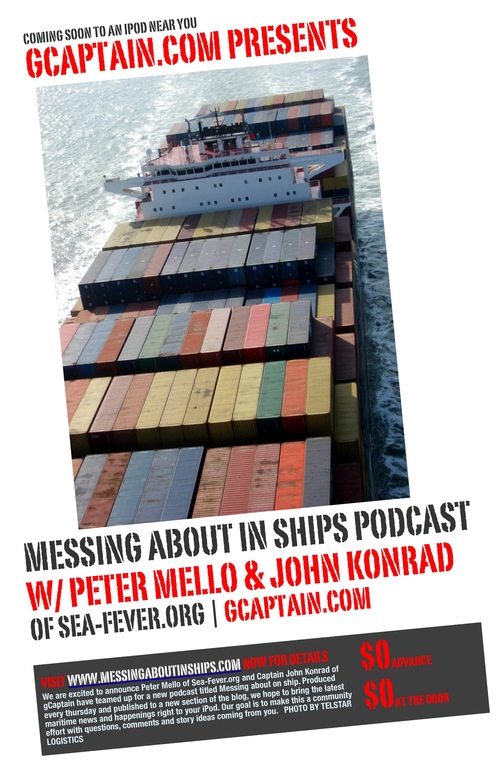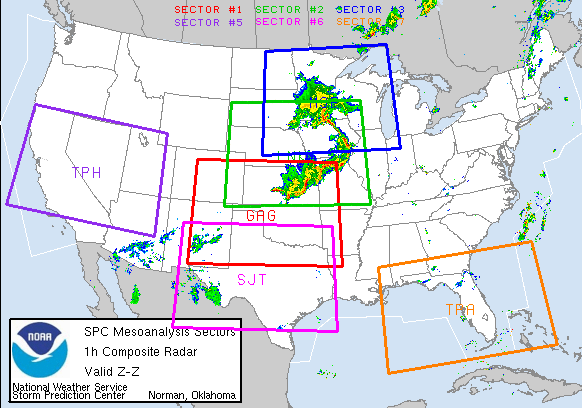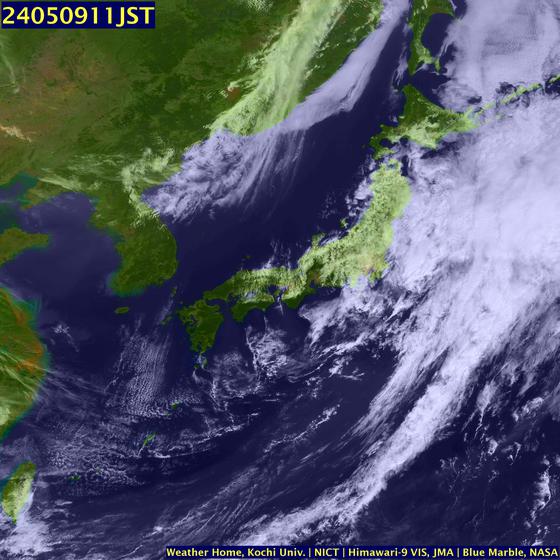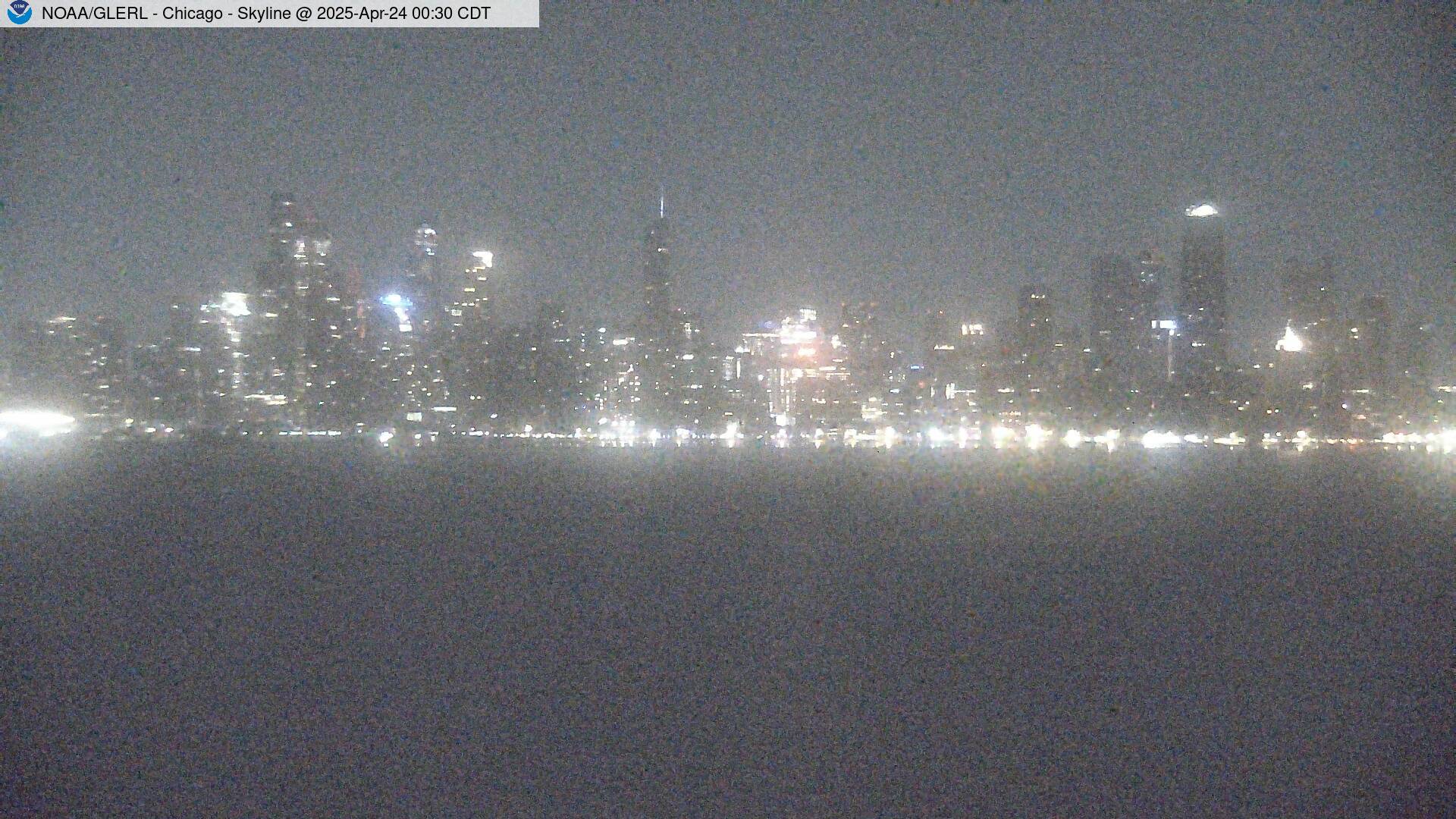 Never Ending Voyage: Henk De Velde about when lightning strikes
Never Ending Voyage: Henk De Velde about when lightning strikes(TheOceans.net) Lightning can indeed strike twice; and listening for thunder will make you miss up to 40 per cent of lightning strokes. In US, about 100 people are killed by lightning each year, more than by tornadoes or hurricanes!
Interestingly, in spite of all kinds of weird weather and many years out there - ExWeb's founders have never experienced lightning storms on the Arctic Ocean or at Antarctica. Neither on the Atlantic Ocean and only once high up on Everest!
Yet thunder storms happen often enough at sea (often close to shore) and also on lower mountains (such as the Alps and the Rockies). While bigger boats can have elaborate systems; ocean rowers, budget sailors, campers and climbers remain unprotected.
The other week, ExWeb made a call for simple solutions. Henk de Velde heard us but following 30 years at sea; his experience still comes down to - rubber boots.
A tractor
Writes Henk:
"The safest places for a person outdoors in a thunderstorm are inside a metal-bodied car or lying flat on the ground. I can give an example of both."
"My brother in law, a farmer, was in the middle of an open field. When a thunderstorm approached, he went under his tractor. Don't ask me why but I think he also wanted shelter from the rain."
"The tractor was struck. He told me that he was laying there under the tractor flat on the ground for several seconds surrounded by fire. I think he was lucky to have survived."
A steel boat
"Another example happened to me. In thunder, a steel boat is the safest. I was sailing Campina about 700 miles north of the Hawaii islands, on my way to the Aleoutian Islands when lightning struck."
"I still remember what the sky looked like. I saw lightning strike the water around me and reefed sails. I went inside for protection when suddenly I heard a big boom. I thought the mast had fallen. All electricity failed."
"For a minute or shorter, a ball of fire danced through the saloon. It was ball-lightning. I never felt any heat, but my muscles went stiff and ached for more than half an hour. After the fireball was gone, I checked on the boat."
"The mast was good. All electronics were saved, with fuses blown. But all battery chargers burned, and wiring from the wind generator in addition to two other battery chargers had melted. I had to return to Hawaii to have it fixed. The battery chargers were toast beyond repair."
Grounding
"Lightning is dangerous. You can protect your boat by means of grounding but whatever you do, you can never be sure about not getting struck or not getting damage."
"On my first boat, a plywood Wharram cat, I would at times use a cable from the rigging to the water. As the mast was wood and the rigging was attached to the mast by rope lashings, I was never sure of the efficiency and on my next three catamarans, all racing boats with aluminum or later carbon masts, a mast to water grounding system didn't exist. Campina was a steel vessel and the perfect Faraday cage."
"My current Juniper is a wood/epoxy trimaran with two wooden wingshaped rotating masts. The boat, including mast, is built by her designer Chris White (www.chriswhitedesigns.com) with a lightning protection included."
"A wire extention points like an antenna from the free-standing top of the masts. This steel wire is connected to a cable inside the mast running to aluminium hounds on which the wire rigging is attached, going to chain plates in the floats and from there a wire leads to a grounding plate on the outside of the underwater floats."
"All instruments are grounded to a grounding plate in the main hull, as is the SSB radio which has an antenna wire through the mizzen mast. This is the best grounded boat I ever had."
"But what will happen with the new carbon mast? Carbon is a conductor. If I get a synthetic rig, I'll have to run a heavy cable from the bottom of the mast through the beams to the floats for the same protection. I'm not so sure about this as it will lead the high voltage a long distance through the boat."
St Elmo's fire and Ball lightning
"In all my 30 years of sailing I have only been struck once, but there was another event that I will never forget."
"I sailed Wharram off the coast of Panama with huge thunderstorms mounting above land. A noice sounded from the masthead and the wooden mast looked as if it was on fire - the top burned like a Xmas sparkling-light."
"I was frightened at first but then I realized this was St Elmo's fire - a luminous electric discharge that may appear on pointed objects during heavy storms. It is usually seen on steeples (tips of aircraft wings), the mastheads of ships, and sometimes near the head of a person or the horns of cattle."
In the end: keep your fingers crossed and off the rigging
"After all, statistically the chance of getting struck is very small even when you see lightning hitting the water around you. Lightning does not always search the highest spot."
"In a steel boat, you are safest inside and I would say this goes for all boats. If you have to be on deck - wear heavy rubber boots. Don't walk barefoot and don't touch the mast or the rigging."
Earlier this year, Henk De Velde arrived Argentina without a mast and a broken propeller. Henk plans to stay in the area for the rest of the year, waiting for the new mast and a new sailing season. Currently in Colonia in Uruguay, 300 miles from Mar del Plata, Henk is painting his decks and writing booklets such as "God and Grace" and "Resistance, Hope and Beauty" (not about sailing) and a travelbook titled "Nowhere is a place." After fixing the boat, Henk plans to explore the country on the cheap and hike the Andes. After all, it is a A Never Ending Voyage.
Henk de Velde was born in Holland January 12, 1949. His childhood dream was to become a captain and explorer. From the age of 10 until 14, he read all the books he could find on the subject. Starting out as deckhand at age 15, Henk worked in the Merchant Navy for 13 years and made Captain in 1978, with a master license for all ships in the Amsterdam Nautical Collage. "But after becoming a Captain I had to become an explorer," he told ExWeb.
Henk married Gini who also took part of his first journey. Their son was born in 1981 on Easter Island; the couple divorced 1984 in South Africa. Henk wrote 7 books, all in Dutch. He made two documentaries for Dutch TV. Austrian TV also produced 'Fire and Ice - the Flying Dutchman'.
Henk's other hobbies include riding motorbikes; he started with a 440 cc chopper and ended with a ZZR 1100 road bike. He gives lectures and talk shows about voyaging and life, with the message "Choose your own goal."
Henk first made waves on ExplorersWeb September 3, 2004 when disaster struck his Campina: "Ice floes clashed against each other constantly with a power enough to crack my ship," He reported. "Around 4 hours before darkness fell, the ice berg that we had been anchored to broke. We maneuvered Campina to a larger ice berg, between the floes."
"Then the flow twisted and a heavy iceberg pressed the boat against the wall of ice. We were crooked 10 degrees. The iceberg pressed the boat onto underwater ice. I heard an enormous cracking. We tied her up with long lines to the ice." Henk and his ice lots Boris, 72, were stuck in the ice wall of the Laptev sea.
The Northwest Passage proved impossible indeed, but Henk De Velde's "Impossible Journey" won a special mention in the 2004 ExWeb awards for his battle to the bitter end.
Henk de Velde had previously sailed around the world four times, three times non-stop and solo. The first trip lasted between 1978 and 1985… so Henk is known to take his time when out exploring. "The reason for traveling like this is to experience new things and enjoy life to the fullest," Henk said already back then.
After returning home from his "Impossible Journey" in 2004 - a sail attempt around the world via the "impossible" Northern seaway along the North East Passage above and along Siberia, Alaska, Cape Horn and Antarctica - Henk has now decided to go back out there - and stay.
WEATHER NOTE
Exhilarating' phenomena
Waterspout forms over Lake Michigan.
Cherry Scott wasn't expecting to see a waterspout when she walked out of her kitchen door Sunday afternoon. But there it was, a funnel of water and spray over Lake Michigan

A PHOTO of a waterspout taken by Cherry Scott of Northport shows a funnel descending from clouds over Lake Michigan.
Marty and Cherry Scott enjoy rural life on their Black Sheep Crossing Farm on Kehl Road in northern Leelanau Township, which sits about three-quarters of a mile from Lake Michigan. She said it was it was an unusual circumstance that had her looking in the right direction to see the waterspout starting to form over Lake Michigan.
“I just happened to look at the right spot at the right time. If I had come out of the house a minute later, I would have missed it,” she said. Scott grabbed her new digital camera and hustled out the door in the stocking feet to capture the image.
“I ran out into the cow pasture, it was kind of exhilarating. There wasn’t any noise, except right before it happened there was a tremendously loud crack of thunder,” Scott said.
Scott wasn’t the only person who saw the waterspout. Susan Shively was at her home on Lighthouse Point Road, about a half-mile north of the entrance of Cherry Home Shores Subdivision, when she saw the fully-formed tunnel of water as it moved north along the shoreline.
“I wasn’t sure at first what we were seeing. I thought it was a small tornado, but we learned later on it was a waterspout,” Shively said. According to Shively, the waterspout traveled north along the shoreline though she wasn’t sure how far out on Lake Michigan it was located. “We watched it for 15 minutes and then it just disappeared,” she said.
Shively and her husband have lived in northern Leelanau Township for 10 years. It was the first time they saw a waterspout.
“It was very exciting,” she said.
Both Scott and Shively captured the natural phenomena in pictures, and contacted the Enterprise. Other waterspout witnesses called Greg McMaster, chief meteorologist for TV 7&4. He said he received four calls about waterspout sightings Sunday, and received pictures from Elk Rapids.
“It was not surprising we received so many photos. Conditions were good for waterspouts Sunday afternoon,” McMaster said.

Another view of the waterspout was
submitted by Barbara Robbins of
Leelanau Township.
Jeff Lutz with the National Weather Service’s Gaylord office said he received reports of waterspouts from three miles north of Elk Rapids, near Lake Charlevoix, and in Grand Traverse Bay. Lutz said waterspouts occur when relatively cool air moves over warm water and there is a low-pressure system nearby.
“It is similar conditions for producing lake effect snow or rain. With the clockwise spin of a low pressure system you get water spouts and cold-air funnels,” he said. The wind speed can’t be too fast, either, he said.
“Once it hits land, though, a waterspout will dissipate,” Lutz said.
Both Lutz and McMaster predicted an “interesting” time of year for weather is upcoming, especially on the Great Lakes.
“There are two seasons on the Great Lakes, the stable and unstable time of year. The stable time of year is when you have cold water and warm air, like winter going into spring. There is no cloud development and things are relatively stable,” Lutz said.
He said the instability begins when fall nears and land temperatures start dropping while water temperatures remain warm.
“The unstable time typically runs from late summer through most of winter. It’s an exciting time to be a meteorologist,” Lutz said.
Shippers, activists clash on Great Lakes
By JOHN FLESHER
AP Environmental Writer
September 14, 2008 12:00 am
TRAVERSE CITY -- Day after day, ships longer than three football fields depart Great Lakes ports after picking up or delivering loads of iron ore, coal and other cargo. Reaching open water, crews wash the decks with high-powered hoses. It's called "cargo sweeping," because residues that spill onto decks during loading and unloading are swept overboard. The U.S. Coast Guard estimates that 1 million pounds of such debris is washed into the lakes every year. The longstanding practice would appear to violate clean-water laws and regulations enacted in recent decades. But federal officials have given cargo residues a series of exemptions since the early 1990s. Now, the Coast Guard is deciding whether to continue them. The agency is scheduled to issue a new rule by the end of this month. Several options are on the table, including a ban on cargo sweeping. But regulators also could let it continue, while requiring stepped-up record keeping so they can learn more about effects on the aquatic environment. Canada's federal government altered its shipping law in 2007 to allow cargo sweeping and is considering amending a fishing law to do likewise, said Mark Mattson, a Toronto-based investigator for the Waterkeeper Alliance. His coalition is among conservation groups that want cargo sweeping halted, saying it's just another form of littering. But shippers say requiring them to collect the residue, move it onshore for treatment and flush it into municipal wastewater systems would impose ruinous costs. A Coast Guard report last month estimated the price tag at $51.8 million up front, plus $35.7 million a year -- more than the annual profit for the entire industry. "What some are proposing could mean the end of Great Lakes shipping and the movement of cargo by more expensive and less eco-friendly modes of transportation," said Glen Nekvasil, spokesman for the Lake Carriers Association, which represents U.S.-flagged freighters on the Great Lakes. The Coast Guard report said cargo sweeping apparently does little if any ecological damage. Jim Weakley, president of the lake carriers group, likened it to "hosing down your driveway." But environmental advocates say the jury is still out. More study is needed of potential long-term effects -- particularly on bottomlands that provide habitat for fish and macroinvertebrates at the base of the food web, said Joel Brammeier, vice president for policy with the Alliance for the Great Lakes in Chicago. "It's just common sense that throwing garbage into the Great Lakes is wrong and will cause harm," Mattson added. Cargo sweeping has been standard operating procedure since the earliest shipments of iron ore from Michigan's Upper Peninsula during the 1850s mineral rush, says the Great Lakes Maritime Task Force, an industry coalition. Bulk dry cargo hauled across the lakes consists primarily of iron ore, coal and limestone, but also includes smaller quantities of cement, salt, sand and grain. In most ports, the freight is moved on conveyor belts between a ship's cargo hold and onshore storage facilities. As that happens, bits and pieces spill onto the deck or tunnels beneath. Besides contaminating other types of cargo, the residues and dust create unsanitary conditions and slippery surfaces, Weakley said. So the material is flushed overboard from the deck or pumped from tunnels in the lower hull. In its environmental impact report, the Coast Guard said ship residues can be found on lake bottoms, although in small concentrations. "The effects of over a century of ... discharges on sediment quality or biological resources are barely detectable," it said. "Consequently, it would be difficult to project the effects of a single (cargo debris) discharge or even a full year of discharges." Environmentalists contend some of the residues contain mercury and other metals that can harm fish habitat, but Weakley said mercury from coal is released only after it is burned and deposited in a gaseous form on waterways. The Coast Guard said it would not allow dumping of toxic or hazardous materials. The study lists five policy alternatives, including prohibiting cargo sweeping or letting it continue under certain conditions. Shippers could be required to keep more extensive records, which would provide data for possible future regulation. They also could be ordered to reduce the amount of debris swept into the water by making operational, mechanical or structural changes aboard ship or in port. Weakley said shippers already have developed best-management practices to reduce the volume of cargo washed overboard. They observe no-discharge zones around spawning grounds, marine sanctuaries and other sensitive areas and wouldn't object if others were added, he said. Brammeier, of the Alliance for the Great Lakes, wants a serious crackdown on cargo sweeping and bristles at the suggestion that it would destroy shippers. Many industries have mended their ways to protect the waterways on which the regional economy depends, he said. "The future of the Great Lakes depends on protecting and restoring them, not on century-old assumptions that we can stress the system but never reach its breaking point," he said.
RS


































































































![Validate my RSS feed [Valid RSS]](valid-rss.png)
No comments:
Post a Comment